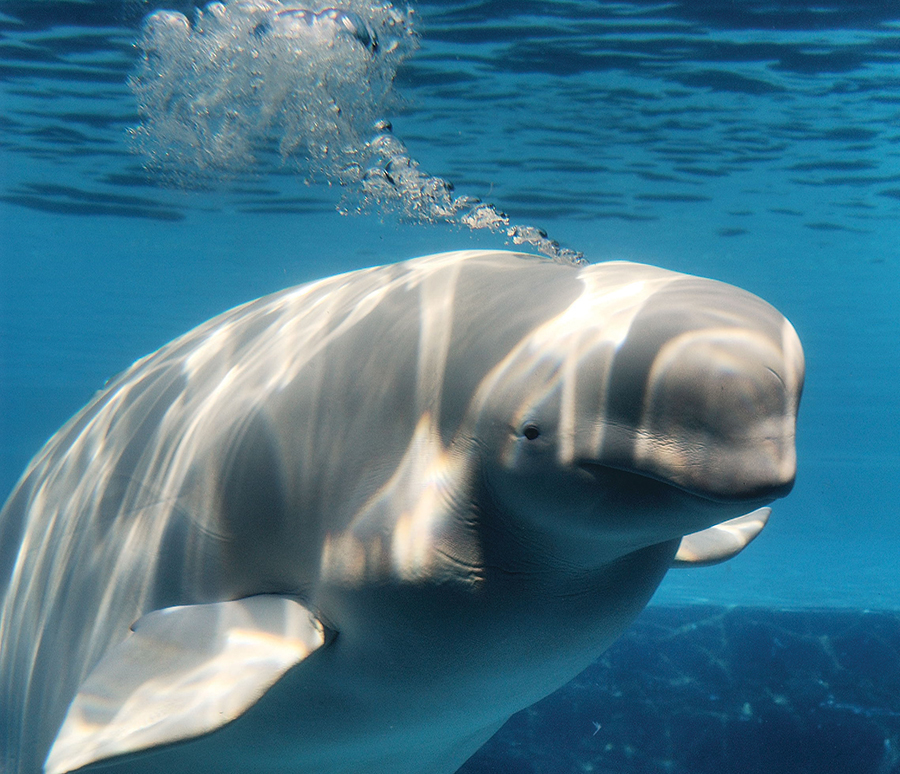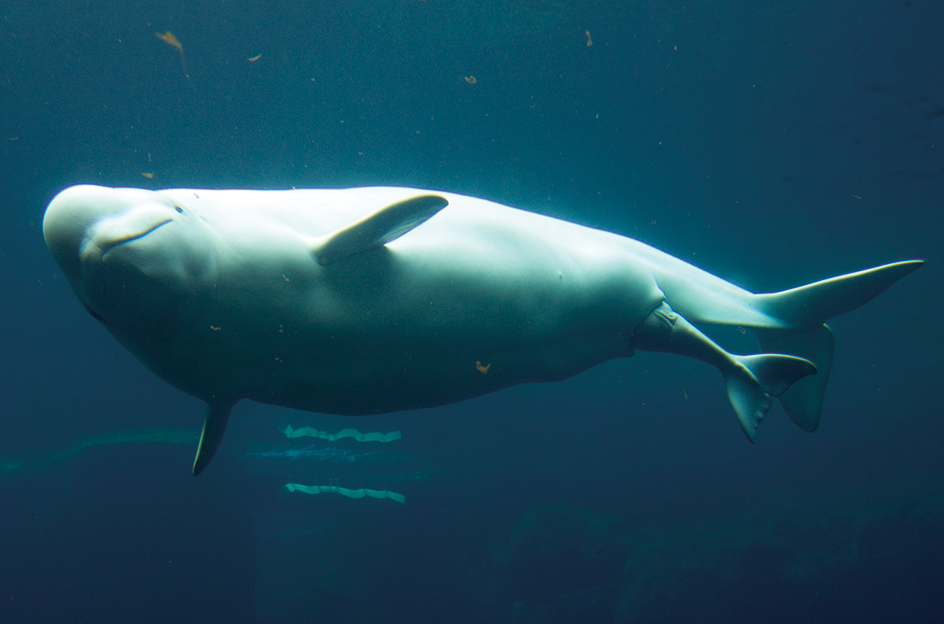Beluga whale, also called the white whale, is a toothed whale of the Arctic Ocean. An adult beluga is white, with short fins and a rounded body. The beluga is insulated against the cold by blubber, a layer of fat beneath the skin.

Belugas are smaller than most other whales. Adult males average nearly 16 feet (5 meters) in length. They typically weigh about 2,200 pounds (1,000 kilograms). Females are smaller, usually reaching 13 feet (4 meters) long. They weigh about 1,500 pounds (700 kilograms).
The beluga feeds on many different kinds of fish and squid. In many areas, it prefers Arctic cod or polar cod. It is hunted by killer whales, polar bears, and people.
The beluga has a large lump of tissue called the melon on its forehead. The melon helps the whale produce and hear sounds. The beluga is also called the “sea canary” because of its high-pitched calls. Some of these sounds are clicks. The whale uses the echoes of clicks to sense its surroundings, an example of echolocation. Other sounds are used for communication. Belugas are highly social animals. They live in groups called pods.
Females give birth to a calf every third year, in the spring. A newborn beluga is dark gray or brown. As it matures, the newborn gradually turns white. 
Some human activities threaten the survival of belugas. These activities include commercial fishing, hunting, pollution, oil and natural gas development, and anything that causes global warming.
